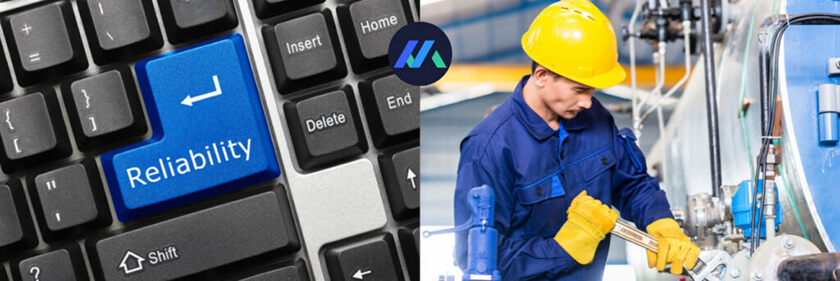Industry 3.0 pioneered the idea of automated mass manufacturing, enabling the efficient production of millions of similar goods. As the process’s pace and size grew, labor became an impediment, ushering in an era of outsourcing. Manufacturers rapidly outsourced labor-intensive operations to countries with lower labor costs.
Machines are increasingly driving production processes rather than humans, emphasizing the importance of maintenance and reliability teams.
Maintenance and reliability teams ensured that equipment met efficiency metrics over decades of service during Industry 3.0. Machines were the means of development, and technicians ensured that they worked properly.
The only drawback to this strategy was that it pitted repair and reliability teams against other development departments. For instance, if a computer was required to be shut down for recommended repairs, production would be halted as well. Though machine health could improve, production output decreased in the short term.
Considering the innovation and cutting-edge technology that Industry 4.0 uses, it’s clear that future maintenance and reliability teams will look very different from those in the past.
Manufacturers now face new demands. Usually, Industry 4.0 is synonymous with cutting-edge technologies such as artificial intelligence (AI), the Internet of Things (IoT), machine learning, and advanced analytics. But the real reason for their adoption is to drive manufacturing innovation in response to large shifts in market demand in the twenty-first century.
Consumer demand is much more diverse now than it was before, owing to the internet. A viral moment can literally cause demand to spike (or plummet). People demand more customization and sustainable production practices. When all of these factors are considered, it becomes clear that manufacturers now lag behind by 20-30 years.
Demand, sustainability, and cost pressures are all compelling manufacturers to adapt — now, not later.
Maintenance and Dependability in a Changing World:
The irony of Industry 4.0 is that while technology defines and drives it, each advancement increases the need for human input. The fully integrated factory is only a few years away.
In the near future, maintenance and reliability teams will continue to play a critical role in development. Historically, these teams were primarily responsible for planned maintenance and required repairs. That is no longer the case in Industry 4.0, where teams must optimize efficiency while remaining attentive to conflicting demands and shifting forces. Operations and maintenance teams alike will need to consider asset health holistically — both in terms of what they require to accomplish their strategic goals and how best to accomplish them.
Makoro™’s dynamic learning system takes operations management a notch up, where sets of validated recommendations with very high relevance and confidence score can be replicated across multiple locations to derive the maximum value. So instead of sharing data as reports and dashboards, manufacturers and operators share recommendations/prescriptions across locations.
Aligning Reliability and Maintenance with Industry 4.0:
Currently, maintenance and reliability teams are unprepared for the critical role they will play in development. They lack the technologies necessary to track machine health in real-time across several locations. Additionally, the use of siloed systems keeps maintenance and operations disconnected.
For all of these factors, maintenance and reliability teams would need to fully rethink their approach to manufacturing. To start with, recognize the critical role of maintenance and reliability teams in all aspects of factory operations. Second, begin equipping certain teams for the future roles they will fill. Whether by increased preparation, technology, or talent, or a combination of the three, maintenance and reliability teams will need additional resources to handle the additional responsibilities.
Makoro™’s Recommendations Dashboard tracks asset performance metrics and correlates them to recommendations in real-time. Leaders who have embraced Makoro™ have achieved more than 11% improvement in the agility of their operations.


